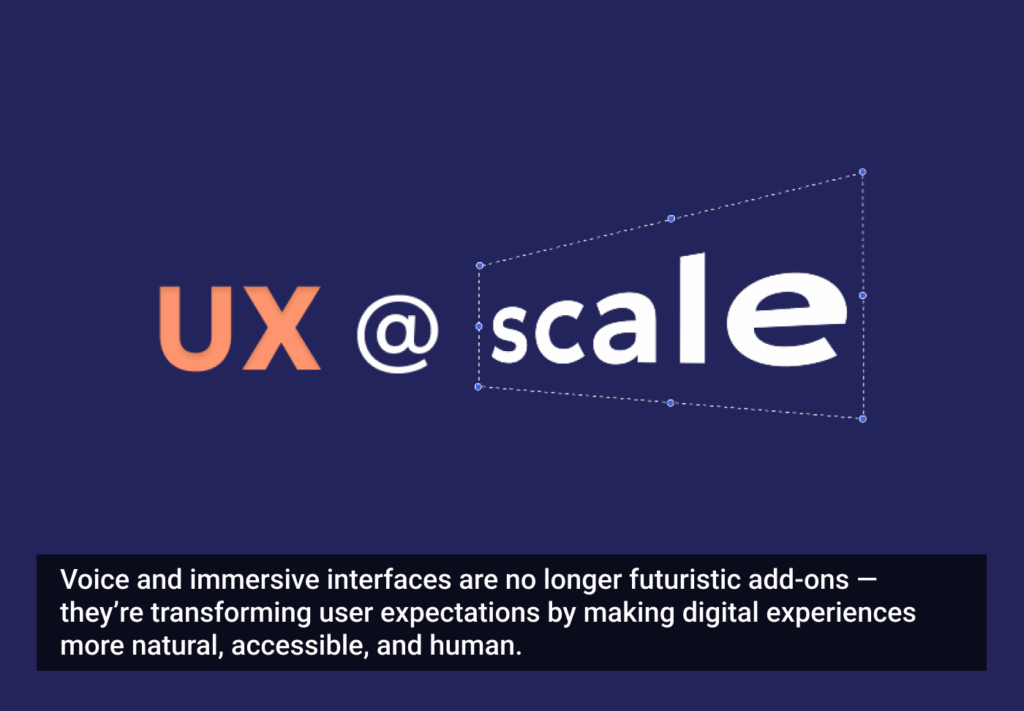Big data is all the rage. It’s discussed at heavily conventions all over the world and written about on blogs across industries. Big data is starting to look like an inevitable mechanism for doing business in the always-on, ever-connected, Internet-of-Things era that is upon us. Big data is here to guide our corporate decisions, save our business’ money, and direct our experience design initiatives in every way.
When it comes to UX, before we jump on the big data bandwagon, we need to challenge its predominance. UX professionals cannot create an experience for figures in a database or tracking systems, and designers must keep focusing on real people rather than on numbers. Online experiences must remain geared toward real users and their interests, goals, and desires.
What About the Numbers?
Many companies and their marketing departments have transitioned to rely heavily on numbers. Allowing data to drive decisions is not a bad idea when you’re setting goals and conducting conversion and engagement analyses. Uncovering data about which traffic channels or sources yield the greatest traffic numbers and focusing your marketing efforts on those channels and sources often results in increased traffic to your website. However, once more users arrive at your website, they still need to encounter an experience they can connect with. Only with a user-centric approach to design will the increased traffic convert to increased sales.
Focusing on actual users does not mean foregoing all data. Statistics and analyses optimize the UX you offer. You need to use data as a scalable mechanism for understanding the needs and desires of users; only then you can design the experience around that understanding.
In a User’s Shoes: numbers or feelings?
According to the Digital Customer Experience Strategies Summit, 74% of consumers get frustrated with websites that have content that isn’t personalized. When users visit a website, they do not know this statistic, nor do they care that 72% of marketers experience good ROI after personalizing their sites for their actual users. Furthermore, visitors may not even be aware that they subconsciously trust a site that offers a tailored UX.
To find out what users cares about, we must seek to understand their online behavior
To turn this tidbit into an actionable UX optimization, you need to step into your users shoes. To find out what users cares about, UX professionals must seek to understand their online behavior. While advancements in big data enable us to track, monitor, analyze, and understand our users, users themselves should always remain the focus of UX modifications. Industry best practices dictate that we create user personas through in-depth market research and design our UX for them.
When we track, monitor, and analyze online behavior, we discover that a user is not a number and can never be reduced to one. Behind every web visit we track is a real person with real goals and real fears.
What Do Users Care About?
UX professionals need to analyze users’ online activity, deduce their motives and intentions, and create a UX that is relevant, enjoyable, and effective.
Dr. Liraz Margalit discovered that there are 6 online personality types. In addition to correlating user experience to profile information such as a user’s age, gender, location, profession, and income level, UX is optimized when these personality types are taken into consideration by adding UX elements that propels them to action.
For example, if a high rate of shopping cart abandonment is detected, it might be worthwhile to optimize the site’s user experience for the “Wish Lister” personality type: shoppers who place items in their shopping carts, but never complete the purchase. Psychologically, Dr. Margalit says this kind of online behavior stems from a user experience in which the virtual shopping cart feels like property. The user almost feels like she or he owns the items in their cart, so they don’t necessarily feel the need to complete the online purchase. While the user is unlikely to realize this, effective UX will “enforce the wishful thinking bias—the notion that what we want to be true affects what we believe to be true.”
Imagine how “Trish the Wish Lister” would feel if the next time she visited the site, she was greeted with a popup announcing that one of the items in her abandoned cart is currently on sale, or with a coupon code to purchase everything in the cart? According to Dr. Margalit, these optimizations “give the customer the sense that ‘the Universe is giving me a sign that I should buy this product.’”
UX Elements Real People Care About
Polling users and asking what they care about is ineffective; so is relying on overall numbers across multiple sites or even an entire industry. A user-centric strategy aims to understand things about users that users may not even understand about themselves. Therefore, gathering data that helps analyze and understand user behavior and personality works well for designers. They can use the information to implement optimizations that affect the real online behavior of real people.
Trust and credibility
When data shows users bouncing off the site or hovering over a Call-to-Action without clicking, it might be time to optimize the site with elements of trust and credibility.
According to the Stanford Persuasive Technology Lab, 46.1% of people consider a website’s design to be the number one criterion for discerning the company’s credibility. Therefore, try adding contact information, trust seals, customer testimonials, and other forms of social proof to the site and gauge its effect on the bounce rate and CTA clicks.
Images and visual content
Users are visual creatures: according to 3M Corporation, 90% of the transmitted information in the human brain is visual and users process visuals 60,000 times faster than text.
When it comes to images and visual content, incorporate a clean design, as well as colorful and captivating images that can be zoomed and enlarged. Also, place important visuals above the fold. The goal is to trigger an emotional response with images: one that causes users to feel secure and confident about the site, and convert at ease.
Technical and detailed information
Based on the type of users that visit a site, place more detailed and technical information deeper within the site, but make it easy to find and consume. Whether your users are drawn to product comparisons, case studies, white papers, data sheets, or technical demonstration videos, make the content available and the website searchable.
To Big Data or Not to Big Data
Like all great philosophical conundrums, this one may not have a simple all-encompassing answer. But there is a clear conclusion regarding UX. While big data has its place in gathering important information about users and their behavior, it should never be at the expense of focusing on real people and tailoring the online experience to them.







